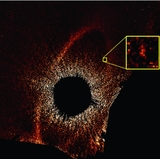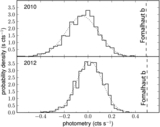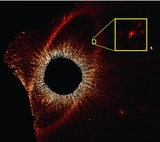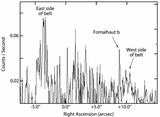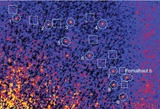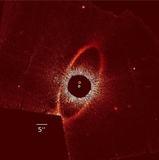Image Details
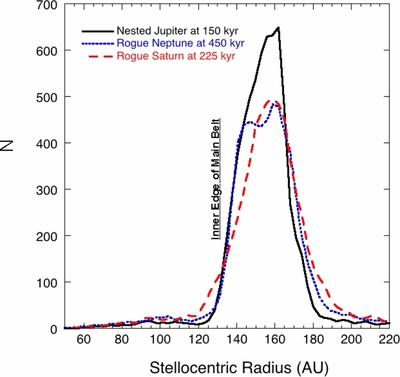
Caption: Figure 30.
Radial profiles of the model main belt which started as 8000 particles contained in the region 140–160 AU. A Jupiter is placed at a = 120 AU and after 150 kyr the perturbations widen the belt's width (black solid line), except that Jupiter maintains a sharp inner edge. A fraction of particles (6%) cross inward of Jupiter to produce the interbelt disk (e.g., shown here between 60 and 120 AU). We add a rogue, coplanar Neptune ( a = 177 AU, e = 0.8 and integrate the belt for another 300 kyr. By 450 kyr (blue dotted line), perturbations from both Neptune and Jupiter spread the belt more, but Jupiter continues to maintain the sharpness of the inner edge. Instead of Neptune, we add a rogue Saturn with the same orbit as the Neptune case. By 225 kyr (75 kyr after it was added into the simulation) the sharpness of the belt inner edge has been significantly eroded.
Copyright and Terms & Conditions
© 2013. The American Astronomical Society. All rights reserved.



